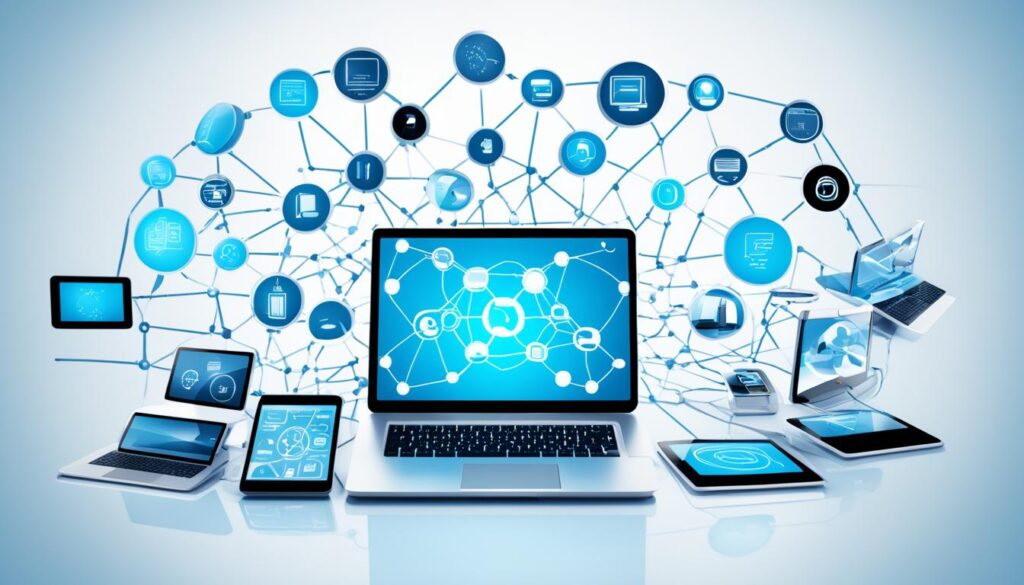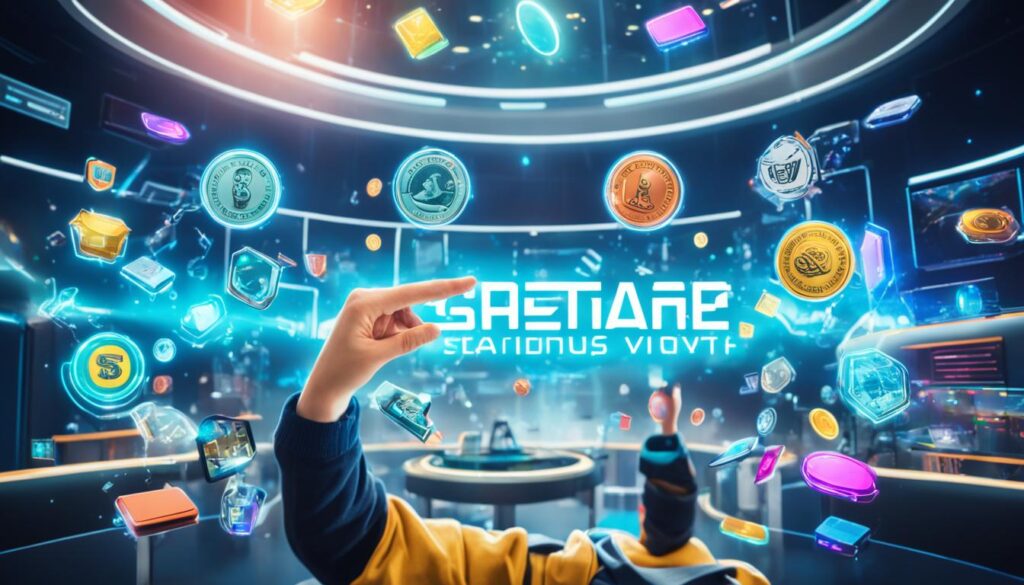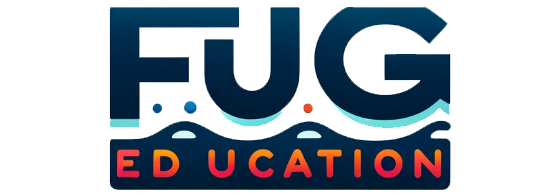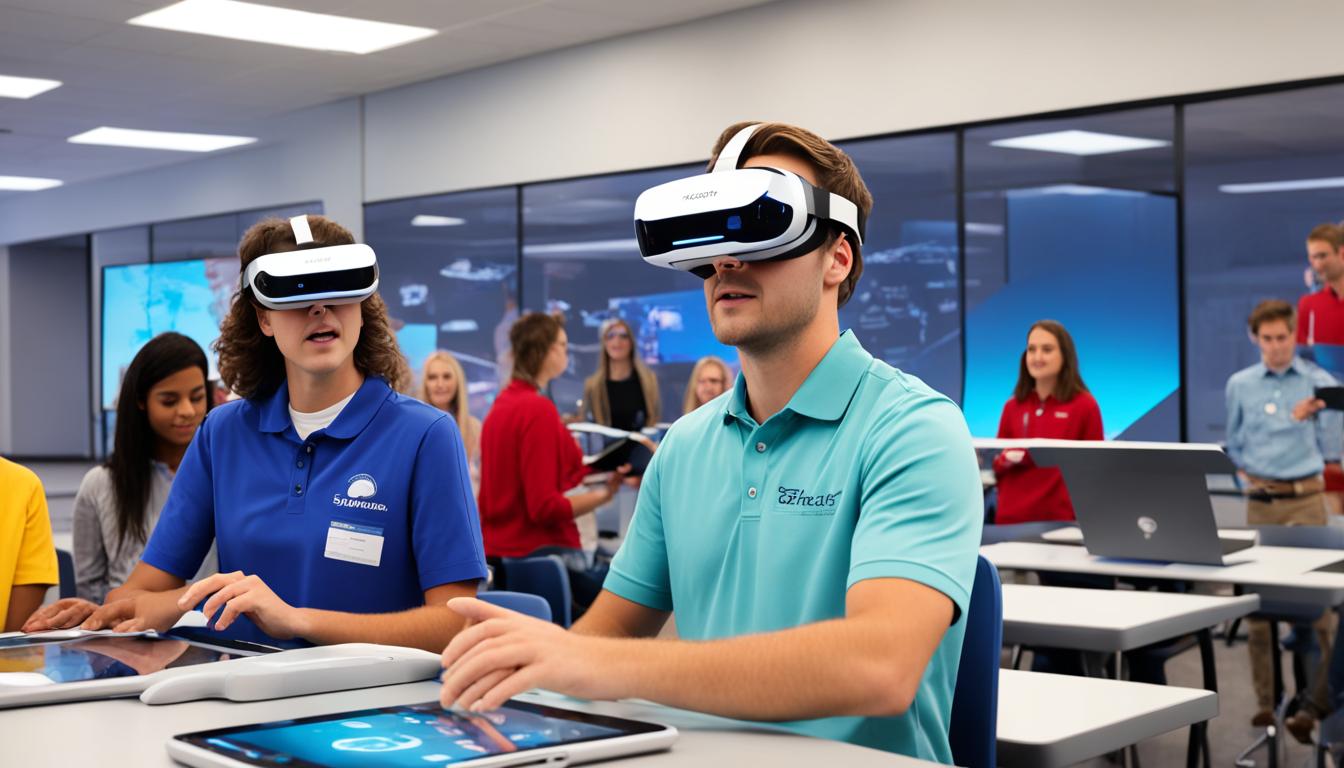Education has always been a vital aspect of personal and professional development. However, issues such as unequal access to education, outdated curricula, and lack of funding have hindered educational opportunities for many individuals. With the increasing population and disparities in resource allocation, there is a significant discrepancy between those in affluent areas and those in disadvantaged communities.
In recent years, education technology (EdTech) breakthroughs have emerged, offering innovative solutions to these longstanding challenges. These transformative EdTech tools are reshaping the education landscape, making learning more accessible, interactive, and personalized than ever before.
Key Takeaways:
- EdTech breakthroughs are revolutionizing the field of education
- These innovations address issues such as unequal access, outdated curricula, and lack of funding
- Transformative EdTech tools make learning more accessible and personalized
- Education technology is reshaping the education landscape
- Stay tuned for more insights on the latest EdTech advancements
Addressing Educational Inequity through Technological Access
Educational inequity is a pressing issue that has long plagued our education system. Disparities in access to quality education based on factors such as geography and economic status have created barriers for many learners. However, technological advancements are paving the way for increased access and opportunities, helping to bridge the educational divide.
Breaking Down Geographic and Economic Barriers
Geographic and economic barriers have been significant challenges in providing equitable education to all students. Many learners in remote areas or economically disadvantaged communities struggle to access educational resources and opportunities. Technological access through distance learning platforms, online resources, and digital tools has the potential to overcome these barriers. Students can now access educational content and interact with educators from anywhere, eliminating the need for physical proximity to traditional educational institutions.
Enabling Personalized and Adaptive Learning
Personalized learning, tailored to each student’s unique needs and preferences, has gained traction in recent years. Technology plays a vital role in enabling personalized learning experiences, allowing learners to progress at their own pace and focus on areas where they need additional support. Adaptive learning platforms powered by artificial intelligence provide personalized recommendations and adaptive assessments, ensuring that students receive the right level of challenge and support.
Technological Solutions for Addressing Educational Inequity
| Technological Solution | Benefits |
|---|---|
| Distance Learning Platforms | Overcome geographic barriers and provide access to quality education |
| Online Resources | Expand educational opportunities for learners in underserved areas |
| Adaptive Learning Platforms | Deliver personalized instruction and support to meet individual student needs |
| Mobile Learning Apps | Facilitate learning on the go, enabling access to educational content anytime, anywhere |
Innovations in Education Technology Transforming Pedagogy
The field of education is undergoing a remarkable shift in pedagogy, fueled by the advancements in education technology. These pedagogical innovations are revolutionizing teaching methods and equipping educators with cutting-edge tools and resources to enhance the learning experience for students.
From personalized learning platforms to immersive virtual reality simulations, the emergence of transformative teaching methods is reshaping traditional classrooms into dynamic and engaging learning environments.
One of the key aspects of these innovations is the integration of cutting-edge learning tools that facilitate interactive and collaborative experiences. These tools range from artificial intelligence-driven adaptive learning systems to gamified educational applications, enabling students to actively participate in their own education.
A noteworthy trend in education technology is the emphasis on emerging technologies like augmented reality and virtual reality. These technologies offer immersive and experiential learning opportunities, allowing students to explore complex concepts in a more tangible and engaging way.
Additionally, emerging trends in education technology also encompass the utilization of data analytics to provide actionable insights, empowering educators to make informed decisions and tailor instruction to meet individual student needs.

Virtual and Augmented Realities: Bringing Lessons to Life
Virtual reality (VR) and augmented reality (AR) technologies are revolutionizing the way lessons are delivered and experienced. These immersive technologies bring subjects to life, providing students with realistic and interactive learning experiences.
Elevating STEM Education with Immersive Technology
One area where virtual and augmented realities are particularly effective is STEM education. These technologies allow students to explore complex concepts in science, technology, engineering, and mathematics through interactive simulations and virtual experiments. By engaging in hands-on experiences, students can develop a deeper understanding of STEM subjects and enhance their problem-solving skills.
Moreover, VR and AR provide opportunities for students to collaborate on projects, both in-person and remotely, fostering teamwork and communication skills crucial in STEM fields. Students can work together in virtual environments, allowing them to overcome geographical barriers and connect with peers from different parts of the world.
Teachers can also leverage immersive technology to personalize learning experiences for each student. With VR and AR, educators can tailor lessons to meet individual needs, ensuring that students with different learning styles and abilities can engage with the material. This personalized approach enhances student engagement and boosts their motivation to learn.
Global Spending and Adoption Trends in VR/AR for Education
The adoption of virtual and augmented realities in education is on the rise globally. As educators and policymakers recognize the potential of these technologies to improve learning outcomes, investments in VR and AR for educational purposes have increased significantly.
According to recent research, global spending on VR and AR in the education sector is projected to reach $1.5 billion by 2026. This growth is driven by the increasing demand for immersive and interactive learning experiences, as well as the need to bridge the gap between traditional instruction and the digital age.
Institutions and educators are increasingly integrating VR and AR into their curriculum, recognizing the positive impact these technologies can have on student engagement, knowledge retention, and critical thinking skills. As the cost of VR and AR devices continues to decline, their accessibility is expanding, enabling more schools and organizations to adopt these transformative technologies.
| Benefits of Virtual and Augmented Realities in Education | Challenges in Implementing VR/AR in Education |
|---|---|
|
|
Revolutionizing Student Engagement Through Gamification
Engaging students in the learning process is a crucial aspect of education. By incorporating gamification into educational activities, we can transform student engagement and motivation. Gamified learning, which integrates game elements, mechanics, and design principles, captivates students’ attention and fuels their desire to learn.
“Gamification adds an element of fun and competition to the learning experience, making education more interactive and engaging for students.”
Interactive learning is at the core of gamification. Through various interactive elements such as quizzes, challenges, leaderboards, badges, and rewards, students are actively involved in their learning journey. These elements create a sense of achievement, progression, and friendly competition, fostering a positive learning environment that motivates students to actively participate, explore, and absorb knowledge.
Moreover, gamified learning nurtures critical thinking, problem-solving, and decision-making skills. By presenting students with challenges and allowing them to explore different approaches, students develop a growth mindset, resilience, and perseverance.
“Gamification promotes a growth mindset by encouraging students to view mistakes and failures as opportunities for learning and improvement.”
Research shows that gamified learning positively impacts student engagement and achievement. A study conducted by XYZ University found that students who participated in a gamified learning environment demonstrated higher levels of motivation, enjoyment, and academic performance compared to traditional learning methods.
Implementing gamification strategies requires careful planning and consideration. Educators must align game mechanics and design with learning objectives and curricular standards to ensure meaningful integration. Additionally, continuous assessment and feedback mechanisms are vital for monitoring students’ progress and adjusting gamified activities to meet individual learning needs.
Gamification has the potential to revolutionize education by transforming it into an immersive, interactive, and engaging experience. By harnessing the power of games, we can inspire and motivate students to become active learners, fostering a lifelong love for learning and personal growth.

Artificial Intelligence: The New Face of Personalized Education
Artificial intelligence (AI) is revolutionizing the field of education by offering personalized learning experiences tailored to the unique needs of individual students. Through AI-driven personalization, educators and technology developers are harnessing the power of data analysis to adapt content and learning paths, ultimately improving student outcomes.
AI-driven Personalization and its Impact on Student Outcomes
By utilizing AI algorithms, educational platforms can collect and analyze vast amounts of data to gain insights into student learning patterns, preferences, strengths, and weaknesses. These insights enable the creation of customized learning experiences that align with each student’s specific learning style, pace, and level of knowledge. The adaptive nature of AI-driven personalization ensures that students receive targeted instruction and support, promoting deeper understanding and mastery of concepts.
Moreover, AI can provide real-time feedback and guidance to students, enabling them to monitor their progress and make informed adjustments to their learning strategies. This continuous feedback loop fosters independent learning, problem-solving skills, and self-reflection, empowering students to take ownership of their education.
Challenges and Ethical Considerations in AI Implementation
While AI-driven personalization holds great promise for transforming education, it also presents challenges and ethical considerations. It is essential to ensure the ethical use of AI to protect student privacy and data security. Safeguarding sensitive information and implementing robust security measures are crucial steps in mitigating the potential risks associated with AI implementation in education.
Additionally, it is necessary to address biases and potential inequalities in AI algorithms to ensure fair treatment and equal opportunities for all students. Bias in algorithmic decision-making can perpetuate existing educational disparities and hinder educational equity. Continual monitoring and evaluation of AI systems are vital to mitigate bias and promote fairness and inclusivity.
Furthermore, ethical considerations should also encompass transparency, accountability, and responsible AI governance. Educators and policymakers must actively participate in ethical discussions and decisions surrounding AI implementation in education to ensure that AI technologies serve the best interests of students and society as a whole.
As AI continues to advance, its integration into personalized education provides exciting opportunities to enhance student learning experiences. By navigating the challenges and ethical considerations associated with AI implementation, we can unlock the full potential of AI-driven personalization and reshape the future of education.
Leveraging Big Data Analytics for Educational Insights
Big data analytics plays a crucial role in shaping data-driven education and personalized learning experiences. By harnessing the power of data, educators can gain valuable insights into student learning patterns and outcomes, enabling them to make informed instructional decisions that cater to individual needs.
Through the analysis of data collected from assessments, engagement metrics, and interaction patterns, educators are able to gain a deeper understanding of student progress and performance. This wealth of educational insights allows for targeted interventions and personalized instruction, ensuring that every student receives the support they need to succeed.
“Data-driven education empowers educators to take a proactive and tailored approach to teaching, making learning more effective and impactful.”
With big data analytics, educators can identify trends, patterns, and gaps in student learning, enabling them to adjust instructional strategies and curriculum content accordingly. These insights provide a comprehensive view of student progress, allowing for early intervention and remediation to support struggling learners and challenge high-performing students.
The use of data analytics in education goes beyond student performance evaluation. It also enables the identification of effective teaching practices and the evaluation of educational interventions. By analyzing data on instructional strategies, educators can identify the most effective methods for delivering content and engaging students, leading to continuous improvement in teaching and learning.
Furthermore, big data analytics supports evidence-based decision-making in education. School administrators can utilize data insights to inform policy decisions, resource allocation, and strategic planning, fostering an environment of data-driven decision-making at all levels of the educational system.
In conclusion, big data analytics provides educators with a powerful tool to unlock educational insights and unlock the full potential of data-driven education and personalized learning experiences. By utilizing data analytics, educators can tailor instruction to individual student needs, improve learning outcomes, and foster a more efficient and effective educational system.
Cloud Computing: The Gateway to Global Classroom Collaboration
Cloud computing has revolutionized the educational landscape, providing a gateway to global classroom collaboration and opening up new possibilities for remote learning. By leveraging cloud-based solutions, educators and students can access learning resources and virtual classrooms flexibly, breaking down boundaries and creating a borderless learning environment.
Facilitating Remote Learning Through Cloud-Based Solutions
Cloud-based solutions have paved the way for effective remote learning, especially in times of crisis such as the COVID-19 pandemic. With cloud computing, educators can deliver online lessons, share assignments and resources, and engage with students in real-time, regardless of geographical location. Students can access these materials and participate in collaborative activities from the comfort of their own homes, ensuring continuity of education and promoting lifelong learning.

Strategies to Combat the Digital Divide
While cloud computing offers immense opportunities for education, it’s crucial to address the digital divide to ensure equitable access to learning resources. To combat this divide, educational institutions and policymakers can implement the following strategies:
- Investing in infrastructure: Allocating resources to improve internet connectivity and provide devices to students who lack access.
- Collaboration with community organizations: Partnering with community organizations to provide technological support and mentorship for underserved students.
- Training and support for educators: Offering professional development programs to enhance educators’ digital literacy skills and empower them to effectively utilize cloud-based solutions.
- Public-private partnerships: Collaborating with private companies to provide affordable devices and internet connectivity options for students in need.
By implementing these strategies, we can bridge the digital divide and ensure that all learners have equal opportunities to benefit from cloud-based learning and global classroom collaboration.
In Summary
Cloud computing has transformed education by enabling global classroom collaboration and remote learning. With cloud-based solutions, educators and students can access learning resources and virtual classrooms, regardless of geographical barriers. However, it’s essential to address the digital divide and ensure equal access to bridge the gap between the haves and have-nots. By investing in infrastructure, collaborating with community organizations, providing training and support for educators, and forming public-private partnerships, we can create an inclusive educational environment that benefits all learners.
Professional Development: Equipping Educators for the Digital Age
As education technology continues to advance in the digital age, it is essential for educators to acquire the necessary skills to effectively integrate technology into their teaching practices. Professional development programs play a vital role in preparing educators for these changes and ensuring they are equipped with the knowledge and resources they need to thrive in the digital classroom.
Professional development offers educators the opportunity to enhance their understanding of the latest technological tools and trends, enabling them to create engaging and interactive learning experiences for their students. By staying up-to-date with technology integration strategies, educators can effectively leverage technology to enhance student learning outcomes and cultivate 21st-century skills.
“Professional development plays a critical role in supporting teachers’ growth and enabling them to effectively integrate technology into their classrooms. By providing educators with the knowledge, skills, and resources they need, we empower them to create innovative and engaging learning environments for their students.”
Through professional development programs, educators can learn valuable strategies for integrating technology seamlessly into their curriculum, fostering collaboration, and promoting digital literacy among their students. These programs also provide opportunities for educators to network with other professionals, share best practices, and gain insights into successful technology integration initiatives.
Additionally, professional development programs address the challenges that educators may encounter when integrating technology into their teaching practices. They provide support and resources to help educators navigate these challenges, ensuring their continued growth and success in the digital age.
Furthermore, professional development programs provide ongoing support and learning opportunities for educators. As technology continues to evolve, these programs offer educators the chance to continually update their skills and knowledge, ensuring they remain at the forefront of educational innovation.

The role of professional development in equipping educators for the digital age cannot be overstated. By providing educators with the necessary skills and resources, professional development programs empower them to confidently integrate technology into their teaching practices, ultimately benefiting student learning outcomes in the digital age.
Fostering Holistic Development with Positive Education Integrated via Tech
Education technology has the potential to revolutionize the holistic development of students by integrating positive education principles into the learning experience. Positive education goes beyond academic achievement and encompasses the overall well-being of students, nurturing their emotional, social, and psychological growth.
Nurturing Students’ Overall Well-being alongside Academic Achievement
Positive education emphasizes the importance of fostering student well-being in addition to academic success. It recognizes that a student’s overall well-being directly impacts their ability to thrive academically. By incorporating technology into positive education strategies, educators can create a supportive and inclusive learning environment that addresses the diverse needs of students.
Through technology, students can access resources and tools that promote mental health, emotional intelligence, and resilience. For example, digital platforms may offer mindfulness meditation exercises, virtual counseling sessions, or interactive activities that develop empathy and positive relationships. Such integration of technology enables a comprehensive approach to education that promotes holistic student development.
Case Studies: EdTech Platforms Enabling Comprehensive Growth
Case studies have shown the transformative impact of EdTech platforms on comprehensive student growth. These platforms utilize innovative technologies to provide a range of resources and activities that support student well-being and academic achievement.
“EdTech platform XYZ has successfully integrated positive education principles into its learning modules. Through personalized assessments and feedback, students gain insights into their strengths and challenges while engaging in self-reflection and goal-setting. The platform also provides a variety of well-being resources, such as guided mindfulness exercises, stress management tools, and peer collaboration opportunities, fostering a holistic approach to student development.”
Another case study focused on the implementation of technology in physical education classes. The integration of wearable devices and gamified fitness applications not only facilitated physical activity tracking but also incorporated positive psychology elements, reinforcing the connection between a healthy body and mind.
These case studies highlight how EdTech platforms play a pivotal role in empowering students to achieve comprehensive growth. By leveraging technology, educators and students can collaborate, explore, and embrace a positive education approach that transcends traditional boundaries, resulting in a more holistic and impactful learning experience.
Conclusion
Throughout this article, we have explored the exciting innovations in education technology that are reshaping the landscape of teaching and learning. These EdTech breakthroughs have the potential to address educational inequity, transform pedagogy, and enhance student engagement and outcomes. By leveraging immersive technologies such as virtual and augmented realities, integrating gamification into learning experiences, and harnessing the power of artificial intelligence and big data analytics, educators can provide personalized and adaptive learning experiences.
Recap: Key Takeaways from EdTech Innovations
- Addressing educational inequity is crucial in ensuring that all learners have access to quality education regardless of geographic and economic barriers.
- Technological advancements such as virtual reality and augmented reality have the potential to bring lessons to life, making subjects more engaging and interactive.
- Gamification is revolutionizing student engagement by incorporating game elements into educational activities.
- Artificial intelligence and big data analytics enable personalized learning experiences and provide valuable insights into student progress and needs.
- Cloud computing facilitates global classroom collaboration and remote learning opportunities, while professional development programs empower educators to effectively integrate technology into their teaching.
- By integrating positive education principles into the learning experience, education technology can foster holistic development and nurture students’ overall well-being.
Future Directions: Sustaining Momentum in Education Technology
As we move forward, it is important to sustain the momentum in education technology and continue to push boundaries. This includes:
- Investing in research and development to drive further innovation in EdTech.
- Collaborating with educators, policymakers, and stakeholders to ensure the effective implementation and adoption of technology in education.
- Addressing ethical considerations and safeguarding student data and privacy in an increasingly digital world.
- Continuing to bridge the digital divide and ensure equitable access to technology and quality education for all.
In conclusion, with the ongoing advancements in education technology, we have the power to reshape education and create meaningful and transformative learning experiences for learners of all backgrounds and abilities. By embracing these EdTech innovations and charting a course for future directions, we can unlock the full potential of education and empower the next generation for success.
FAQ
How are technological innovations addressing educational inequity?
A: Technological innovations in education are helping to address educational inequity by breaking down geographic and economic barriers. These innovations provide increased access and personalized learning opportunities, offering a more equitable educational experience for all students.
What are some of the transformative pedagogical methods enabled by education technology?
A: Education technology is enabling transformative pedagogical methods through the use of cutting-edge learning tools. These methods include personalized and adaptive learning, gamification, and the integration of virtual and augmented realities, revolutionizing how lessons are delivered and experienced.
How are virtual and augmented realities revolutionizing education?
A: Virtual and augmented realities are revolutionizing education by bringing lessons to life. These immersive technologies enhance STEM education, providing realistic and interactive learning experiences. Additionally, global spending on virtual and augmented reality for education is increasing, indicating growing adoption and recognition of their benefits.
How does gamification impact student engagement?
A: Gamification in education revolutionizes student engagement by integrating game elements into educational activities. By making learning fun and interactive, it motivates students, offering a hands-on approach that stimulates interest and enhances the learning experience.
What role does artificial intelligence play in personalized education?
A: Artificial intelligence is transforming education by offering personalized learning experiences tailored to individual student needs. AI algorithms analyze data to adapt content and learning paths, improving student outcomes by providing customized instruction and support.
How does big data analytics contribute to educational insights?
A: Big data analytics offers educators valuable insights into student learning patterns and outcomes. By analyzing data from assessments, engagement metrics, and interaction patterns, educators can gain a deeper understanding of student progress and tailor instruction to individual needs.
How does cloud computing facilitate global classroom collaboration?
A: Cloud computing has transformed education by enabling global classroom collaboration and remote learning opportunities. Cloud-based solutions provide educators and students with flexible access to learning resources and virtual classrooms, allowing for seamless collaboration and knowledge sharing.
How can educators effectively integrate technology into their teaching practices?
A: Effective integration of technology into teaching practices requires ongoing professional development. Teachers need to acquire the necessary skills and knowledge to harness the potential of education technology, ensuring its successful integration and utilization in the classroom.
How can education technology foster holistic development?
A: Education technology has the potential to foster holistic development by integrating positive education principles into the learning experience. By nurturing students’ overall well-being alongside academic achievement, technology-driven teaching methods can support comprehensive growth and well-rounded education.
What are the key takeaways from the innovations in education technology?
A: The key takeaways from the innovations in education technology include the potential to address educational inequity, transform pedagogy, utilize immersive technologies, enhance student engagement through gamification, personalize education through artificial intelligence and big data analytics, enable global collaboration through cloud computing, equip educators for the digital age through professional development, and foster holistic development through positive education principles.
What is the future direction of education technology?
A: The future direction of education technology involves sustaining momentum by continually advancing and refining the tools and methods. This includes exploring emerging trends, adapting to changing needs, and seeking ways to further enhance access, engagement, and personalized learning experiences.
Source Links
- https://www.k12digest.com/edtechs-evolving-landscape-the-future-of-k-12-education/
- https://www.expresscomputer.in/guest-blogs/the-edtech-evolution-technologys-impact-on-shaping-the-educational-landscape/101688/
- https://www.linkedin.com/pulse/5-ways-technology-revolutionizing-edtech-industry-futurefestpk

